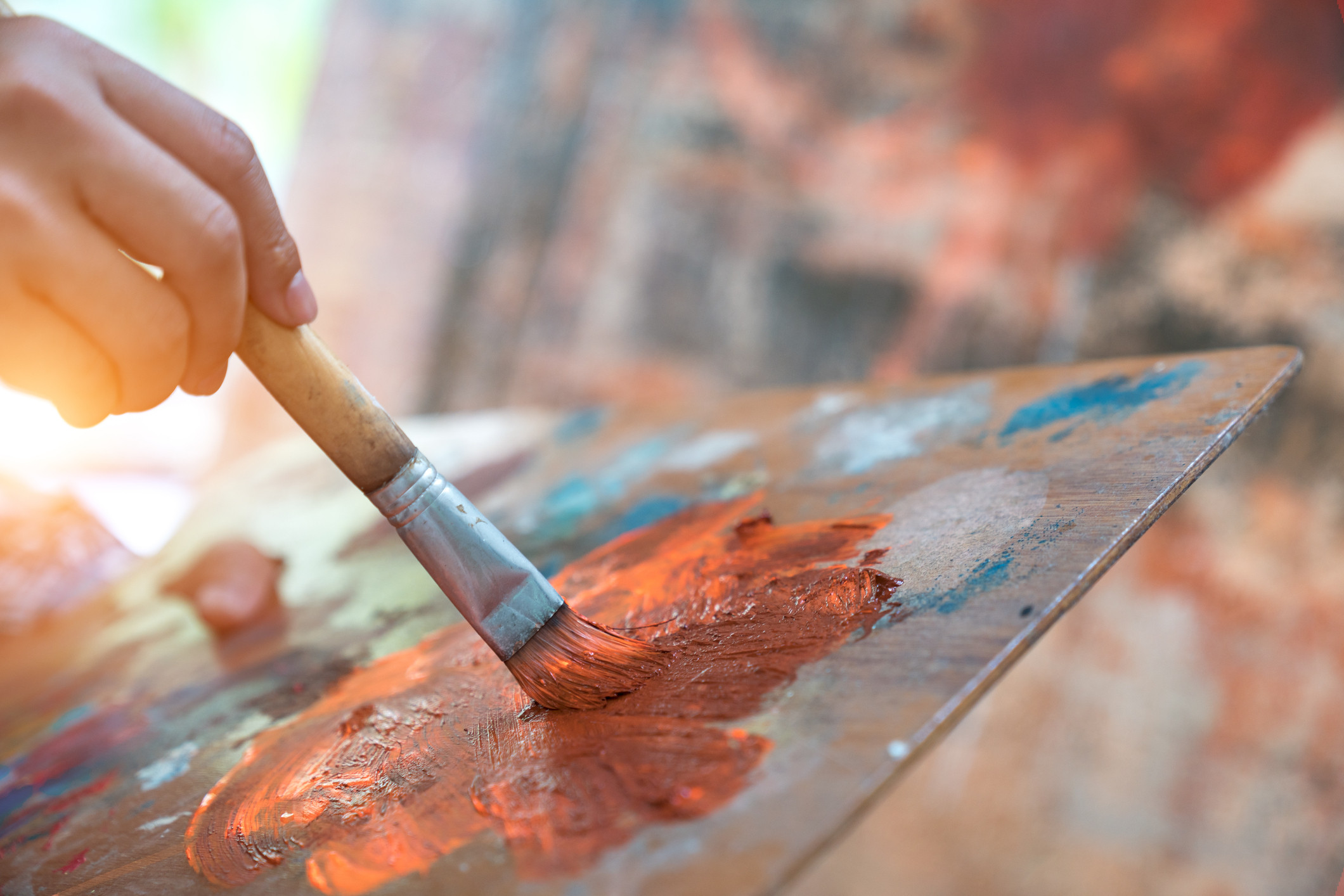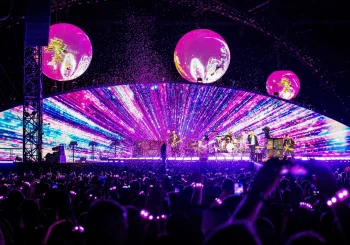From ancient Egypt to today, art has always been prioritized among Egyptians. Whether to represent belief or culture, or as a form expression, art dictates a special place in their lives. With the emergence of talks about the importance of mental health, many began to look at different ways to invest in the right form of therapy.
Art therapy is one of the less-popular forms of therapy in Egypt. According to the American Art Therapy Association, art therapy integrates mental health and human services and enriches people’s lives through active art-making, creative process, applied psychological theory, and human experience within a psychotherapeutic relationship.
In a Q&A session with Egyptian-American Art Therapist, Farida Ihab, we explore misconceptions surrounding art therapy, the process behind it, and her work in Egypt. With a BA in Psychology and Philosophy from York University in Toronto, Canada, and a MA in Art Therapy and Creativity Development from Pratt Institute inNew York, Ihab relocated to Cairo and has been working as an art therapist for six years.
Can you take us through the process of an art therapy session?
I think of the art therapy session as time catered and tailored to my client, it is a time to serve what they need most. I start off by checking in with them, how they’re feeling, and what is currently moving through. The session can continue as is (verbal processing), or I will suggest an art prompt based on what’s coming up for them. My art prompts are usually open ended, and could sound like: “can you make an image of the [emotion] you’re experiencing,” or “let’s explore what your inner critic looks like.”
Once the image or piece is created, we look at the process and product of the person’s work. We ask questions about it, look at the different parts that make up the piece, and become curious about the person’s meaning that they ascribe to their work. This conversation can last a few sessions and serves as insight to the person’s thoughts, emotions, and behavior towards the theme explored.
Apart from artists, most people cannot express themselves artistically, can they still seek art therapy?
Absolutely, artists and non-artists alike can seek art therapy. A misconception about art therapy is that one needs to have an arts background in order to engage in the practice. However, what we often forget is that we all have our unique ways of expressing, and we all have a creative energy.
If we think about it simply, the color red for one person can symbolize passion and love, while for another, it could mean anger – that is already a difference in creative expression. This color-meaning association does not require having a formal art practice. We all have our unique visual language and creative expression, it is only a matter of openness and curiosity that allows a person to access it.
When someone feels apprehensive towards starting art therapy because “they don’t have art skills,” I like to remind them that whatever stroke, color or shape they choose to put on paper is coming from an inner source, and that in itself holds an intrinsic value of being true to them, even if the meaning is not yet clear.
An art therapist has the skill and training to guide their client or patient through their creative process. So, if a person feels stuck or doesn’t know where to start, an art therapist can offer a different art prompt or suggest a more accessible art material in order to get them started on creative expression.
How do I know which form of therapy will work for me, and accordingly, when should someone seek art therapy?
A common belief about seeking any form of therapy is when a person is in an active crisis. However, this doesn’t have to be the case. I believe a good time to seek therapy is when someone is not necessarily in crisis but notice struggle in their life. Some common (non-crisis) reasons to seek therapy are; feeling stuck, gaining a deeper understanding of oneself, wanting to process difficult emotions and build coping skills, relationship changes, experiencing a life or work transition, or feeling like they do not belong. More reasons to seek therapy are of course dealing with trauma (whether ongoing or past), processing grief, depression, anxiety, being neurodivergent, or experiencing mood, personality, eating or psychotic disorders.
I cannot stress enough on the importance of finding the right form of therapy or better yet, the right therapist for you. This is an issue I see often and would love to see mental health platforms talk more about it. It takes effort and research to find the right therapist but it is so worth it; as it is an investment in yourself and your mental health journey.
A few suggestions to finding the right form of therapy or therapist for you is to get clear on your area of struggle and look for what form of therapy or kind of therapist that can help most. It is important to look for a therapist that specializes or has training in what you need help with, and one that you feel drawn to their bio, work, and background. You can also ask for referrals from someone you trust or from social media groups that represent your community and identity.
Remember that you have the right to ask your therapist about their approach in therapy, how they run a session, and what their experience is with working with people similar to your identity and area of struggle.
One should seek art therapy if they are open to trying a different medium to express themselves. The benefits of art therapy range from raising self esteem and awareness, to building resilience, strengthening social skills, providing healthy self expression, processing trauma, and reducing symptoms of mental health conditions.
Does art therapy work for all types of mental disorders?
Art therapy is used for a wide-spectrum of mental health conditions and illnesses. Another misconception about this practice is that it is only for kids. However, art therapy has shown to be effective across ages and conditions. It is practiced with kids, teens, young, middle aged, and older adults. It can also help with depression, trauma, eating disorders, anxiety, grief, neurodivergence, psychotic disorders, dementia, and much more.
In New York, where I received my formal training, art therapy services were found in schools, hospitals, private practices, community based programs, outpatient centers and rehabilitation centers; which goes to show how versatile art therapy is as a service.
View this post on Instagram
Why do you think art therapy is relatively uncommon in Egypt, despite being different from traditional therapy?
Art therapy, along with other creative therapies, may not be as popular as other mental health services in Egypt as they are relatively recent, from a professional and academic standpoint. In the US, the first available graduate art therapy program was offered in the late 1960’s, while in Egypt, a formal master’s degree or undergraduate program offering art therapy isn’t available (there is however an art therapy diploma in the University of Helwan). The scarcity of programs and licensing in Egypt for professionals in the mental health field interested in becoming art therapists, results in a scarcity in the service itself, rendering to its limited availability as a service.
Another factor, I think, is the absence of an organizational body (such as the American Art Therapy Association in the US) in Egypt dedicated to bringing practicing art therapists together and regulating it as a profession and as a place where one can find resources and professionals in the field.
Another important reason may be the lack of awareness about the efficacy and impact of the creative therapies in mental health compared to other modalities and forms of psychotherapy.
How do you think art therapy can be promoted in Egyptian society?
There is definitely a growing initiative to talk about mental health in various settings such as schools, corporations, and social media. This is already a great ground for inviting more creative therapists into these talks and platforms, allowing them to share their practice and shed light on its efficacy and misconceptions.
Can you tell us about your platform “unearth“?
I created unearth on Instagram in September 2020 as a space to introduce and dive into two practices that were transformative to me personally and professionally: art therapy and yoga. At the time, I was doing both and found them to be cohesive and complementary. To unearth is to dig in order to find something buried in the earth, or discover something that was hidden or lost; which to me, is very similar to what happens in the therapeutic journey. Our true voice and inner wisdom are often buried under layers of shame, shoulds, conditioning, societal constraints, and expectations. Having a safe space to navigate these layers is essential to find that which is lost or is no longer heard.
View this post on Instagram
Subscribe to the Egyptian Streets’ weekly newsletter! Catch up on the latest news, arts & culture headlines, exclusive features and more stories that matter, delivered straight to your inbox by clicking here.






Comments (2)
[…] […]
[…] On Colors and Emotions: Exploring Art Therapy With Farida Ihab […]